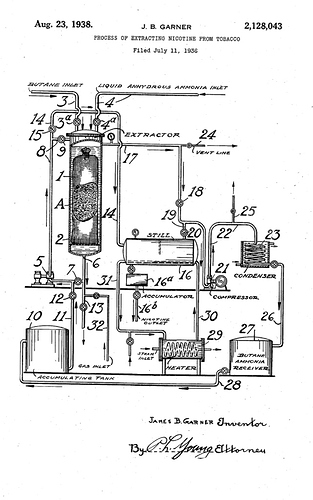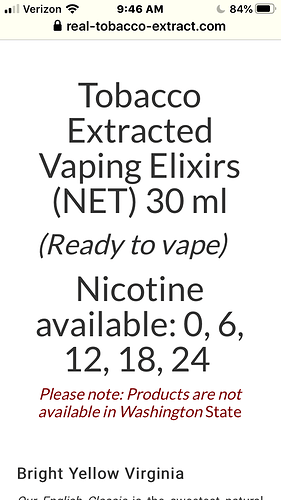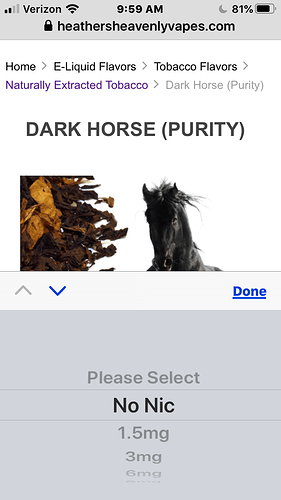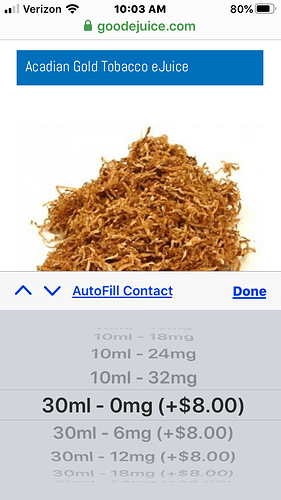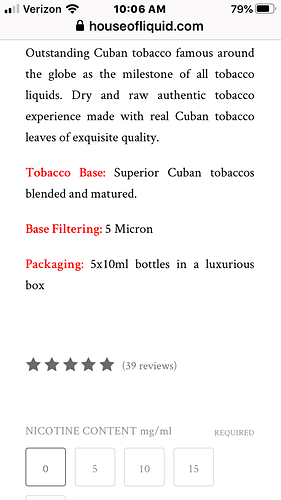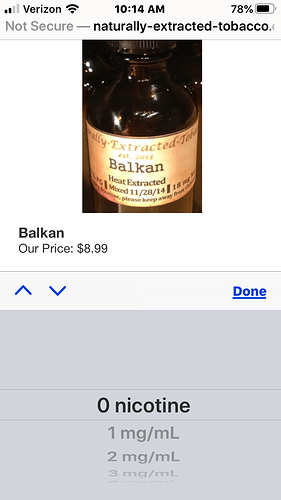50YOC: I take it that you meant “150 F for 6 hrs” or “153 F for 24 hrs” as your graphic shows here ?
There are 3 different SEPARATE Batchs described, but Yes, I typo’ed one of them but then corrected it. I had 150F on the brain, sorry. correctly noted is however, one at 153F and one at 150F. -But, at the time I did that extract I was using a continuous temp controlled water bath, so the insides of the jar (and therefore the extract sample) was held to 130F continuous for all those 8 hours ! - I no longer use that technique. Now I use an ultra-sonic machine and cycle heating / cooling stages over time. This brings the extract sample in question to a normalized reading not over 110F. -So the point is that I have backed way off from higher temp continuous immersion, and now am quite suspicious of that technique. Like @Kinnikinnick says, it is all experience based.
Yikes, that is a “sobering” (so to speak) observation (understanding that various blends may possibly differ). Nevertheless, there (likely?) remain some common (to most all tobaccos) molecular entities - and it might seem that - given that the much longer time period (in cold-maceration) given for solvent(s) to do it’s/their thing, perhaps erring on the side of caution (temperature-wise) may indeed be prudent ?
I have run 1/2 Oz of PS Luxury Bullseye Flake through the ~8 Hour at 117-137 *F warming phase already (along with my other tobacco stocks). Perhaps I’ll try running the remaining 1/2 Oz of that blend with a cold (room temps) maceration process only, in order to provide a means for taste-comparison.
.
Perhaps neither here/there. Have noticed (when gently stirring) a certain tactile sense of “crispness” (a seeming semi-hardening of sorts) of the leaf-bits that I have warmed, not long after the brew reaches temps in the range of 117-137 *F. That “hardness” seems to decrease over the 8-hour warming times. (Perhaps) leaf-bits initially take-up warm PG (or PG/VG) solvent into their structures, initially expanding from inside, but those structures slowly become more porous, thus relieving such internal pressures.
Give it a shot! ![]() Many folks just cover the tobacco with their solvent and stick it in the steep closet. This could very well be the method that’s right for you? You never know til you try it.
Many folks just cover the tobacco with their solvent and stick it in the steep closet. This could very well be the method that’s right for you? You never know til you try it. ![]()
Yes, I will use the same tobacco-prepping process and 100 ml of PG (only), and possibly give it longer to “macerate” at room temperatures than the ~4 weeks of the initial PS Lux BE run. This will likely lead me towards temptations to grab and shake-up the (already compressed, thus a bit chunky/stringy) leaf-bits more frequently (and consider changing my handle to “Raven Daly & Knightly” …  ). Seems like if it’s useful to ultrasonically vibrate these “brews” then my little old arms can’t do much if any damage ?
). Seems like if it’s useful to ultrasonically vibrate these “brews” then my little old arms can’t do much if any damage ?
This brings up an interesting question about some of these “tinned” tobaccos. I recently ordered this exact tobacco, the Solani, and I will clip here some comments from a PM that went back and forth from my mentor @Kinnikinnick about this subject.
I post this here to help tp perk up the ears of all NETers out there, that sometimes things are not what they seem at first ![]()
Filtering my Solani Aged Burley over the next couple of days
I just received my tin from Cup O Joes but this labeling doesn’t sound like what I thought I read on the reviews ? I don’t remember anyone mentioning these licorice and chocolate toppings ? - Did I get the right stuff ?
The review at tobacco reviews states " A very natural blend with absolutely no additives or flavors - a true burley blend."
I guess I am a little confused. ???
Kinnikinnick
Hummm… guess I should have read a little further down the page where this appears:
At first: This flake ISN’T unflavoured NOR UNSUGARED! - K&K states on their website “Chocolate Flavouring”, and only mentions White Burley as ingridient.
And the official additive list reveals it has ~5mg of flavouring and ~168mg of added sugar on 1000mg of tobacco: https://service.bmel.de/tabakerzeugnisse/index2.php?detail_id=104712&site_key=153&stichw_suche=solani&zeilenzahl_zaehler=14 I just hate this kind of false advertisment (usually known from K&K…) “oh, a oh so natural blend, no sugar added.” . . . 168mg of sugar added… as well as PG!
It would be nice if the vendors of tobaccos had their facts straight and didn’t just copy and paste descriptions which are incorrect or out and out lies.
About the only way one will get away from additives in tobacco is to use whole leaf varietals from vendors such as:
https://www.leafonly.com/index.php
On the other hand, it’s a safe bet to say that tobaccos, minus the ones you might grow yourself, have some kind of man made product on the leaf (ie: pesticides). So, when/where do we draw the line with regards to the tobacco we use for making NET? 
Me? I’ll admit… I do turn a blind eye to what might be on the leaf from vendors/manufacturers… tinned or whole leaf. In the end… I’m not a purist. However, it would be nice if the vendors/manufacturers would be up front about exactly what is on the leaf. But, WHO AM I KIDDING!  We’re talking about folks who sell a known carcinogenic plant product to humans.
We’re talking about folks who sell a known carcinogenic plant product to humans.
Oh well… Me = 
 (as I inhale some very tasty vaporized Dunhill Royal Yacht!)
(as I inhale some very tasty vaporized Dunhill Royal Yacht!)
Here are some excerpts from a 2013 report (found in Section II - Pesticides in Tobacco, on doc Page 3):
Tobacco is produced by a large and powerful agricultural industry that makes significant use of pesticides to protect the growing crop and harvested tobacco during curing, manufacturing, and storage. As many as 16 separate applications of pesticides are recommended by tobacco companies just in the interval between greenhouse seed sowing and transplantation into the field … By the early 1990s, there were at least 37 pesticides approved by the EPA for use on tobacco crops in this country, although since that time many of these materials have had their registrations for use in tobacco cancelled … While EPA approvals address requirements for worker protective gear and health monitoring, application rates and frequencies, pre-harvest intervals, and other factors, the EPA has determined that pesticide residues in finished tobacco pose a negligible incremental risk to health when compared to the direct effects of nicotine and other combustion products in tobacco smoke. The EPA has chosen to not regulate pesticide residues in domestically grown tobacco, and it does not issue residue level guidelines for tobacco products at this time. … in 2011 when this law would seem to have been enforceable, the FDA issued a statement to the tobacco industry that included the following statement: “To determine whether there are pesticide residue tolerance levels applicable to domestic tobacco, the Food and Drug Administration (FDA) consulted with the U.S. Department of Agriculture (USDA) and U.S. Environmental Protection Agency (EPA). According to USDA and EPA, under their laws there are currently no established tolerance limits for pesticide chemical residues that apply to domestically grown tobacco." … in this country pesticide monitoring has been largely left to the discretion of the industry, with few exceptions, described below. The U.S. tobacco industry is known to have vigorously lobbied against stricter pesticide controls and public disclosure of residue levels (McDaniel et al. 2005). The situation in the European Union is similar. … The EPA regulates which pesticides can be applied during production and subsequent manufacturing, but in general it has not regulated pesticide residue levels in the final products of domestic producers.
After ~7 weeks of room temperature maceration (only) of 1 Oz of C&D Red Virginia Ribbon in 200 mL of PG (split into two small mason jars), the aroma of the extract is distinctly “hay-like” (and not particularly inspiring) - as opposed to Kinnikinnick’s (and my own initial previously performed) ~8 Hours warming (at ~125 *F) followed by ~4 weeks, both of which have a distinctly pleasant and rather interesting “fruity” aroma. Will be (more objectively than so far) comparing taste-results in a small RDA allowing flavor comparisons. In this (C&D RVR) case, it seems that the ~125 *F initial warming phase is (probably) a desirable procedure - with or without any possible decompositions/reactions. Perhaps a somewhat lower warming temperature for a somewhat longer warming time might be in order (in an attempt to address above temperature concerns) ?
I’m of the opinion, the warming procedure aids in releasing certain quality characteristics of the leaf, which are otherwise left undiscovered using a room temperature maceration process. But, to each their own… ![]()
Hmmm. I’m pondering the juxtaposition of the following related comments posted by 50YearsofCigars:
“Reactions” that would evolve the heat that I had described - but not a statement of “no chemical reactions”.
The situation (surrounding advisable maximum heating-phase temperatures) being complex, and potentially different for various tobaccos, perhaps 110 *F (maximum sustained) is an advisable (conservative) limit ? It would be nice (if it may be possible, via either theoretical and/or empirical means) to arrive at a particular (deemed “safer”) temperature multiplied by time duration product to work with and apply (for each tobacco blend, etc). Perhaps leaf-bits “scald” (in their own sort of way) as temperature approaches 120 *F … ![]()
As mentioned, leaf-bits (in PG) seem to become a bit “crispy in texture” for the first few hours (at ~125 *F).
Hats off to GL Pease “Haddo’s Delight” ! It (with just a touch of White Burley along with Virginia base, fairly strong Perique, and a touch of Cavendish) has been the item to add to my “Triton” blend of NETs extracted from three individual pipe-tobacco blends. Thank you kindly for the reference ! Va / Per / Cav / Burley ! 
Surviving the Dark Ages of The Alkaloidal Inquisitions with The Nicotine Winter Follies (2020):

Source: https://static01.nyt.com/images/2018/12/02/nyregion/02BIG1/02BIG1-articleLarge.jpg
Fragrant things there now are in the earth, whether roots, or herbage, or woods,
or essences which distil from fruit and flower grew and thrived in that land.
With such blessings the earth freely furnished them.
-Plato, Critias
My first NET was made using pipe tobacco from the giant jars in the local tobacco shop. The end result was crappy tobacco taste (more like paper) and flavor casing. I was not impressed but not giving up. I decided to go with top shelf pipe tobacco and that’s where it got a lot better. Here is the list, Peterson’s Irish Whiskey is still a favorite, the whiskey taste is mild and the tobacco is sweet and spicy.
GLPEASE Navigator is very smokey and sweet, almost too sweet.
C&D Autumn Evening is excellent if you like aromatics. Maple is the star of the show here.
Peterson’s Irish Flake is my favorite so far. Just about the strongest pipe tobacco I’ve ever used in a NET. VERY in your face tobacco flavor.
Solani Aged Burley Flake is still brewing- to be continued…
Ratray’s Sterling Flake is still brewing- to be continued…
Methods to the madness…most tins of tobacco are 1.5 to 2 oz.
I use 4 oz jars, break up the tobacco by hand, put in jar, fill with PG until it covers the tobacco, after a day make sure PG is still covering tobacco, add more PG if needed. Cold maceration time I use is 30 days and have good results. I have 2 that I’m macerating for 90 days just to see what happens, my guess is they will be more earthy/grassy. I haven’t done any heated maceration because i fear it will add more unwanted particles and chemicals. I purchased a lab filter on Amazon for around 50 bucks, comes with a hand vacuum pump and filter paper. Worth every penny to filter out as many particles as possible. Don’t use VG to extract tobacco, the flavor is non-existent!
I mix it 35% NET/ 65% VG. Shake n Vape worthy but gets better with steep. Adding nicotine isn’t precise though, depends on the nicotine content of the tobacco used. I make mine a 3mg/ml and i think it really turns out to be about 5mg/ml (Irish Flake is Strong in itself)
I use RDA/RTA’s because NETs Gunk up coils so quickly. Kylin M, Profile Unity.
I will filter the 90 day maceration next week and post the results here.
I do the same technique as you, but usually let them sit for 6 months. I have gotten great flavor from the regular store pipe tobacco that way. Agitate the tobacco every couple of days or so. Works for me.
Unless you have one of these in your extracting process… ![]() … the Nic content in your kitchen chemistry NET is perhaps, a fraction more than nil.
… the Nic content in your kitchen chemistry NET is perhaps, a fraction more than nil. ![]()
Pretty much all manufacturers and vendors of NET liquids offer a 0% Nic content option… Why? Because they don’t have one of those contraptions either.
Point being… add as much Nic as you wish to your liquid, ‘cause you’re getting nothing, Nic-wise, from your home brew. ![]()
Embrace the particles! ![]() … it’s what makes the vapor taste so good!
… it’s what makes the vapor taste so good!
Well, I have a Solani Aged Burley Flake that’s been sitting for 3 months. I’m gonna try letting it sit for another 3!
…couldn’t hurt… and might help. ![]()
I have to say… Solani Aged Burley Flake has been an ADV NET fav for me, quite some time now. It’s one of the few (150ml at a shot) extractions, which I have bled the extract jar dry and happy/excited to start another round.
The other honorable mention of the same ilk, would be Daughters & Ryan Picayune; another nice heart burley blend. It is fairly inexpensive, but still a very nice tobacco for extraction purposes. ![]()
Woot! ![]()
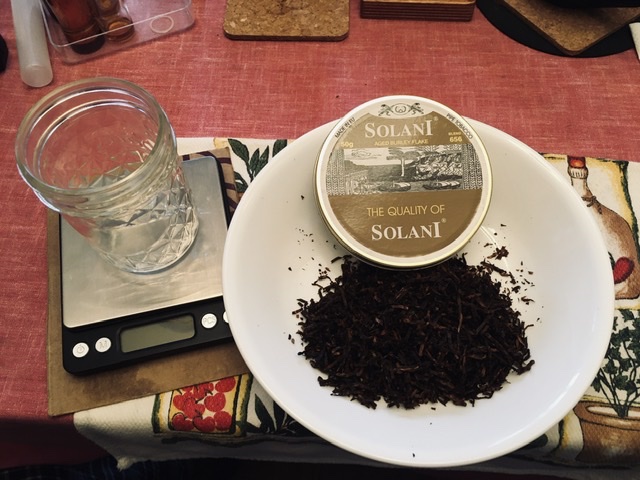
… now to choose what’s next in the jar! ![]()
@Kinnikinnick, @Skullblade789, @50YearsOfCigars, I don’t NET, but find this thread fascinating.


